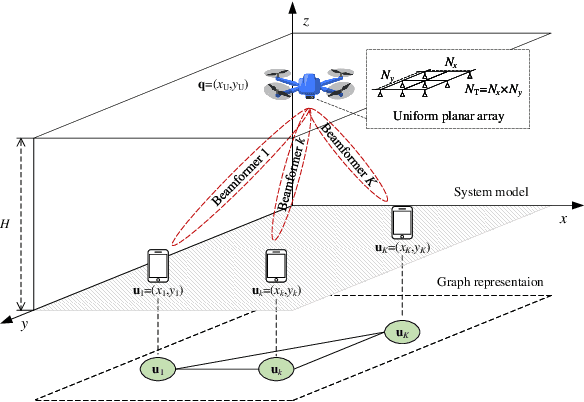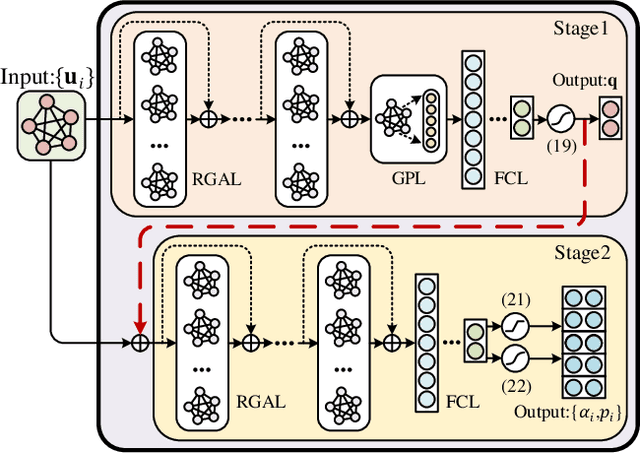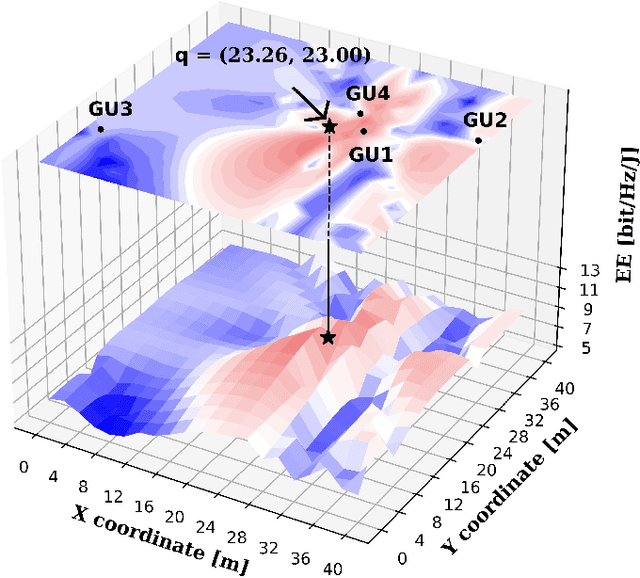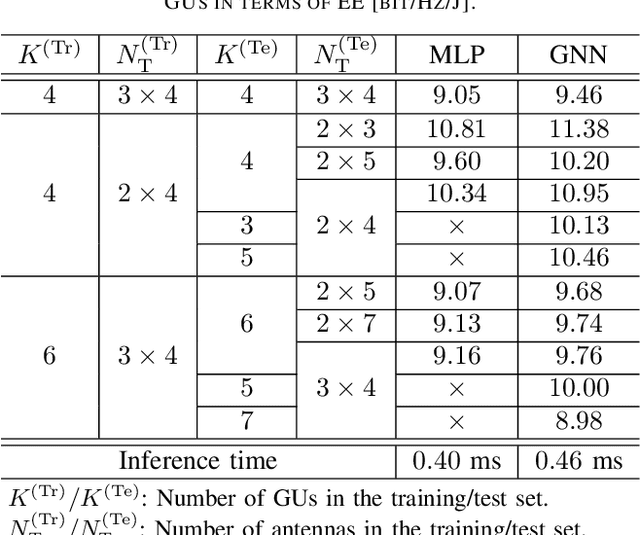GNN-Enabled Optimization of Placement and Transmission Design for UAV Communications
Paper and Code
Oct 03, 2024



This paper applies graph neural networks (GNN) in UAV communications to optimize the placement and transmission design. We consider a multiple-user multiple-input-single-output UAV communication system where a UAV intends to find a placement to hover and serve users with maximum energy efficiency (EE). To facilitate the GNN-based learning, we adopt the hybrid maximum ratio transmission and zero forcing scheme to design the beamforming vectors and a feature augment is implemented by manually setting edge features. Furthermore, we propose a two-stage GNN-based model where the first stage and the second stage yield the placement and the transmission design, respectively. The two stages are connected via a residual and their learnable weights are jointly optimized by via unsupervised learning. Numerical results illustrate the effectiveness and validate the scalability to both UAV antennas and users of the proposed model.
 Add to Chrome
Add to Chrome Add to Firefox
Add to Firefox Add to Edge
Add to Edge